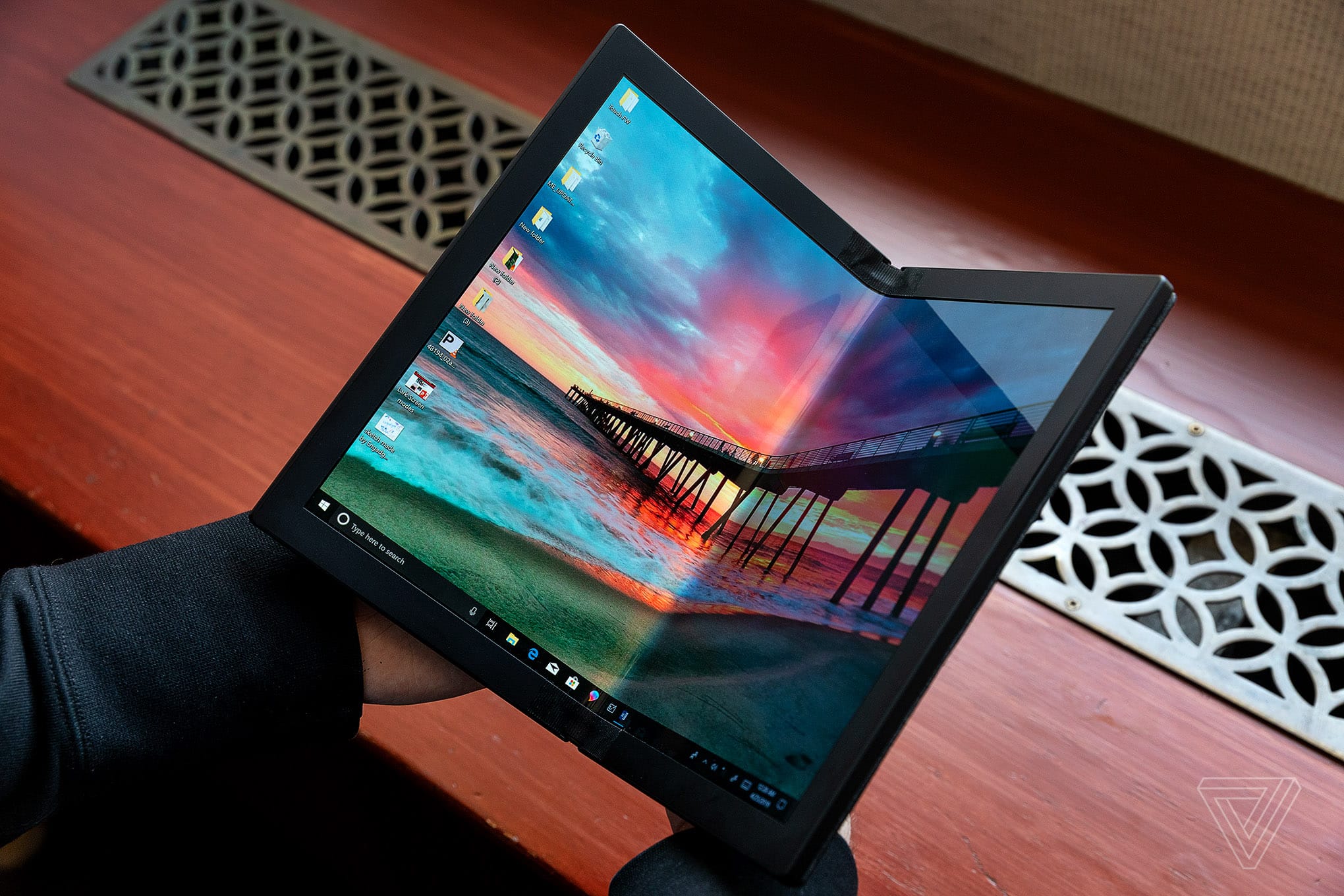Lenovo Shows Off the World’s First Foldable PC →
Chaim Gartenberg, reporting for The Verge:
As for how you use the device, Lenovo is envisioning a variety of use cases. You can use it completely unfolded like a large tablet or partially folded in a book-esque form factor. A built-in kickstand lets you prop up the display on a table for use with an included wireless keyboard and trackpad.
And, perhaps most interestingly, you can turn the device on its side and use it in a traditional (albeit smaller) laptop style form factor, using the bottom surface as a digital keyboard or writing pad, similar to Lenovo’s two-screened Yoga Books. Cleverly, the right side of the display (which serves as the “bottom” portion when used in laptop mode) contains the entire battery, which keeps it weighed down so it won’t topple over.
Since I like prefer physical keyboards to their on-screen counterparts, I don’t envision using this PC without their external keyboard, which I would need to take around with me. In that situation, I may as well just carry a regular MacBook or something like a Surface Pro.
What interests me however, is what this kind of computer would look like if Apple made it, assuming they’ll even get in on this bendable screen trend. Imagine getting foldable iPhones or iPads in a few years time, running iOS. At the same time, MacOS on MacBooks will be running iOS apps via Marzipan. Will MacBooks get touchscreens, which could be useful for those Marzipan apps (at the very least)? Will Apple opt for making foldable MacBooks too? Would you prefer to use a foldable iPad running iOS, or a foldable Mac running MacOS with Marzipanified apps? Will iOS (or iPadOS) and MacOS merge together, despite what Apple has stated in the past? How would all of this even work?
Photo credit: The Verge

